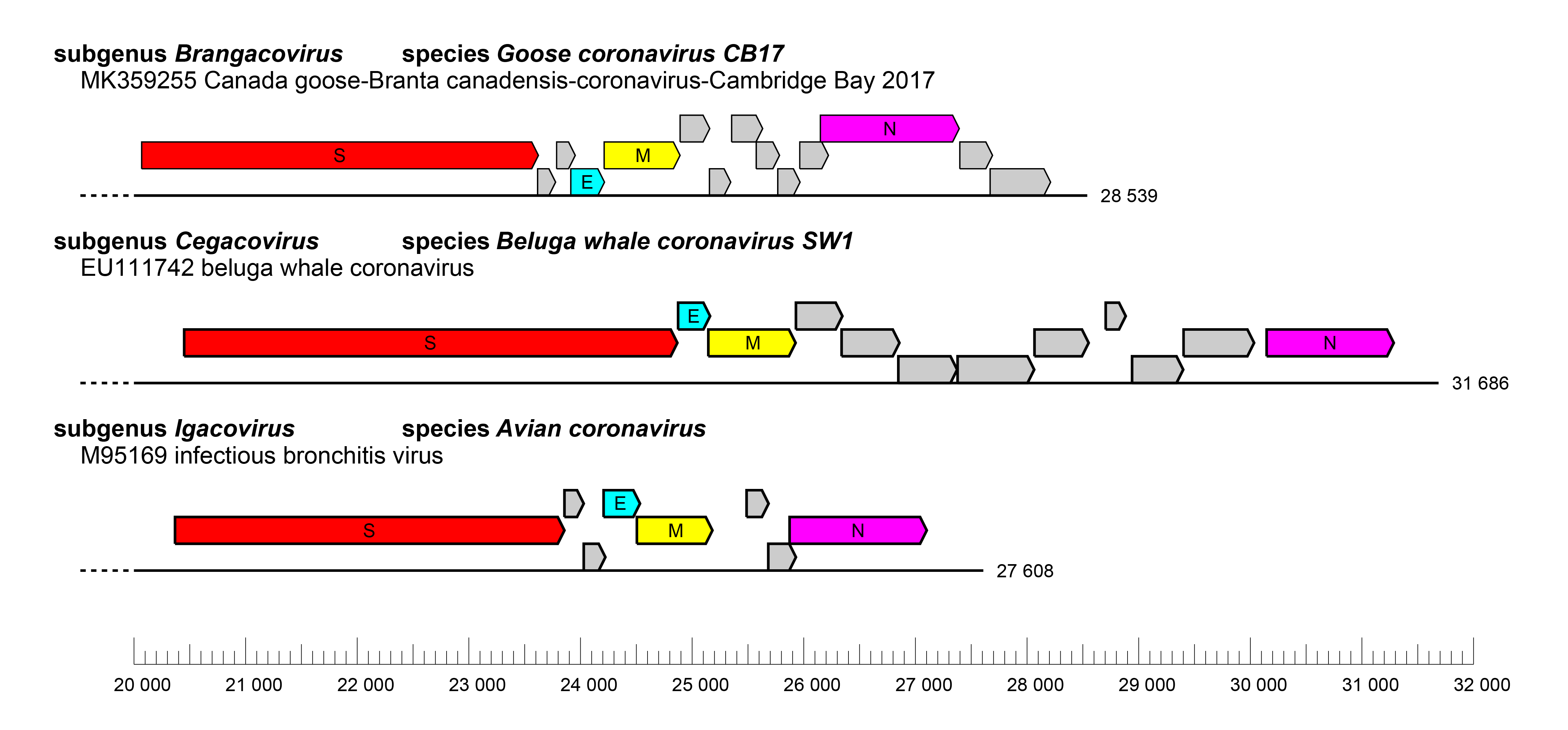Subfamily: Orthocoronavirinae
Genus: Gammacoronavirus
Distinguishing features
Gammacoronaviruses form a distinct monophyletic group in the subfamily Orthocoronavirinae and lack an nsp1 domain in ORF1a (Figure 1.Gammacoronavirus). Three gammacoronavirus subgenera can be distinguished, namely Brangacovirus, Cegacovirus, and Igacovirus. Various sets of accessory genes are observed in members of different subgenera (Figure 1.Gammacoronavirus). Most gammacoronaviruses have been found in birds, with the exception of beluga whale coronavirus and bottlenose dolphin coronavirus HKU22 which infect whales and dolphins respectively (Mihindukulasuriya et al., 2008).
 |
|
Figure 1.Gammacoronavirus. Gammacoronavirus genome organization. Comparison of the 3′-terminal genomic regions downstream of representative members of different gammacoronavirus subgenera. ORFs are depicted as coloured boxes with red, S; cyan, E; yellow, M and magenta, N. ORFs for accessory proteins are depicted as coloured boxes in grey. |
Biology
Similar to deltacoronaviruses, gammacoronaviruses have mostly been discovered in diverse avian hosts. Canada goose-Branta canadensis-coronavirus-Cambridge Bay 2017 (subgenus Brangacovirus) was identified in geese (Papineau et al., 2019), while members of three species in the subgenus Igacovirus (Avian coronavirus, Avian coronavirus 9203 and Duck coronavirus 2714) all have avian hosts. Infectious bronchitis virus (IBV), a member of the species Avian coronavirus, was the first coronavirus to be discovered (Cunningham and Stuart 1947), and affects the avian respiratory tract, gut, kidney and reproductive systems, leading to economic burden in poultry industry. Beluga whale coronavirus (subgenus Cegacovirus), is the first gammacoronavirus to have been discovered in a mammalian host (Mihindukulasuriya et al., 2008). An isolate of this species has also been discovered in bottlenose dolphins (bottlenose dolphin coronavirus HKU22) in which the spike protein sequence is only 74% amino acid identical with that of beluga whale coronavirus. No observable clinical diseases were found in either of these mammalian hosts.
Subgenus demarcation criteria
Details correspond to the family descriptions.
Species demarcation criteria
Details correspond to the family descriptions.

